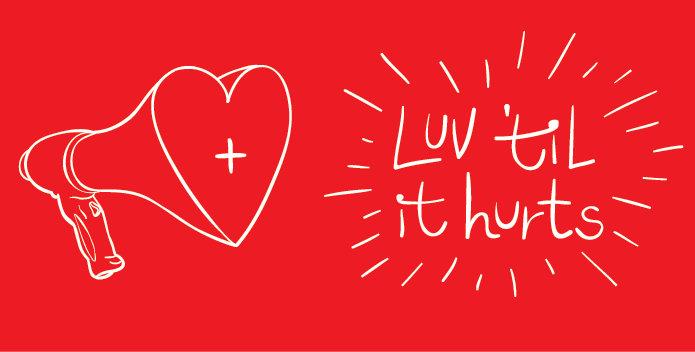Sex Work-as-art, Sex Worker-as-artist: the art of Dinah de Riquet-Bons.
Written by Nic Holas for The HIV Howler: Transmitting Art and Activism
“Build bridges with groups made invisible to society because of fear, phobia, racism, discrimination and stigma. Trans sex workers of colour are the most vulnerable and least consulted. Building bridges means sitting at the table when decisions are made.”
Those are the words of Dinah de Riquet-Bons, who this week should need no introduction. Any AIDS 2018 delegate at the Monday night opening ceremony would not be able to forget her opening address, alongside Minister for Foreign Trade and Development Cooperation, Sigrid Kaag. So impressive, so moving, was de Riquet-Bons that Kaag implored her to commence a career in politics, telling her “need more women like you.”
Dinah de Riquet-Bons, of course, is already in politics. She is a trans woman living with HIV, and a sex worker. Her involvement in these communities is as personal as it is political, as she sits on the board of directors of PROUD the union of Dutch sex workers, and she is also the co-chair of Transgender Europe.
Dinah has been living with HIV since 1991, making her not only an openly HIV+ sex worker (relatively uncommon, given the dangers of living openly as poz and a sex worker, let alone the inherent dangers associated with living/walking/existing as trans) but also a long-term HIV survivor. Being in politics is stitched into the fabric of her identity.
So too, is being an artist. Dinah is a painter, initially working in landscapes and moving into broader abstract pieces. It is her move to portraiture though, that is the centre of our all-too-brief conversation.
That conversation took place in the Sex Worker Networking Zone in the global village. Cleary being pulled in numerous directions by fans and fellow sex workers, all immensely proud of her incredible performance the night before on the main stage of the conference, Dinah could still zero in on our conversation.
Whilst travelling through South Africa in 2004, Dinah was staying with some fellow sex workers and was struck by “the strength and beauty” of these women. At the same time, Dinah found herself observing beauty and strength in the clients who passed through the door to visit her new friends.
Stuck in that in-between place travellers in familiar contexts sometimes find themselves, Dinah was able to translate these reflections of beauty and strength into a series of portraits.
When it came time to leave South Africa, there was no way Dinah could take this portrait series with her on her travels, and more than that, she wanted to leave her artistic impressions of her friends (workers, and their clients) so that they might do with them what they wish.
Some of the women went on to sell their portraits, allowing Dinah’s gift to translate into necessary monetary relief. Others kept them as reminders of the strength and beauty their visiting friend saw in them. Many of the sex workers Dinah painted were also living with HIV, and she ends our conversation by acknowledging that over the last 14 years since she visited, many of them are no longer alive.
When we think about the political nature of our art, we perhaps rest on the idea that its politics is found in its urgency, in its righteous anger, its call to action to create a better world.
When our lives are endlessly political, through the sheer act of existing outside of the frame of what the oppressor deems acceptable, the art we create in response must, at times, reflect beauty. Chatting with Dinah, whose various intersecting identities are always measured in stark contrast against whoever shares the stage with her (as opposed to vice versa), I am reminded of that pursuit of beauty.
Dinah’s story reminded me of a moment between AIDS artist David Wojnarowicz and Zoe Leonard, recorded lovingly in Cynthia Carr’s excellent biography, Fire in the Belly.
Zoe wanted to show Davis her recent work, a series of photos of clouds. She confessed to him, known for his incendiary, urgent work, that she felt a little foolish capturing lovely photos of a cloud.
David told her that her photos were beautiful, and “that’s what we are fighting for. We’re being angry and complaining because we have to, but where we want to go is back to beauty. If you let go of that, we don’t have anywhere to go.“
_____________________________________
The HIV Howler: Transmitting Art and Activism is a limited edition art newspaper focusing on global grassroots HIV art and cultural production. Artists have and continue to play a fundamental role in shaping broader societal understandings of HIV and working within communities that are most impacted by the virus: queer and trans people, people who use drugs, sex workers, people of colour, and indigenous peoples. Together we reflect the immediacy and urgency of global HIV/AIDS dialogues as well as their historical continuities.
The HIV Howler is a forum for dialogue, a demand for aesthetic self-determination, a response to tokenism, and a guide to navigating the vibrational ambiguities between policy, pathology, and community.
Publishers + Editors
Anthea Black and Jessica Whitbread
Editorial Advisory Committee
Anthea Black, Theodore Kerr, Charles Long, Mikiki, Darien Taylor, L’Orangelis Thomas, and Jessica Whitbread.
Funding
We gratefully acknowledge the support of the Toronto Arts Council.


